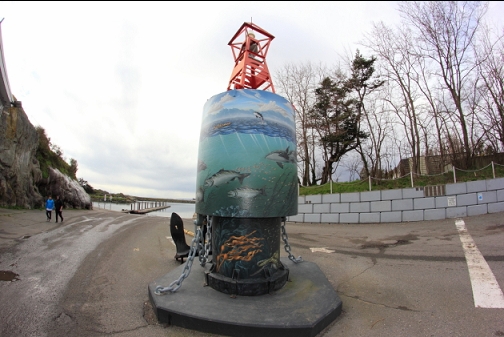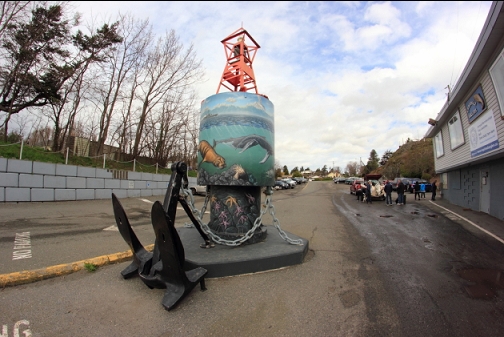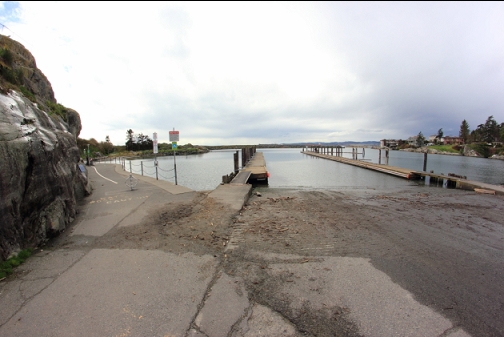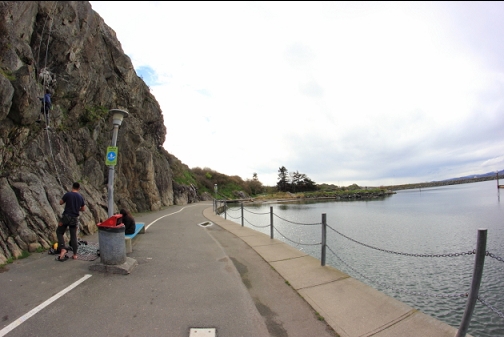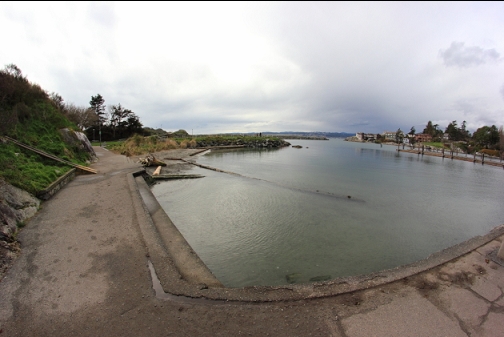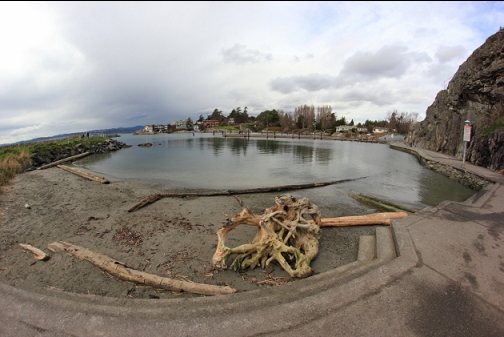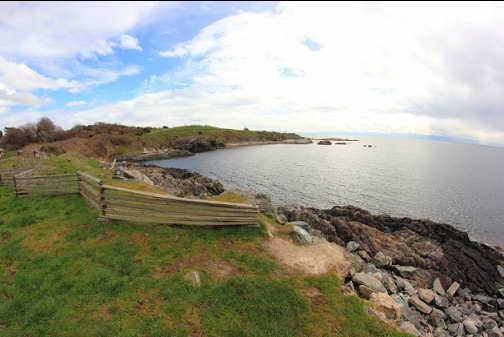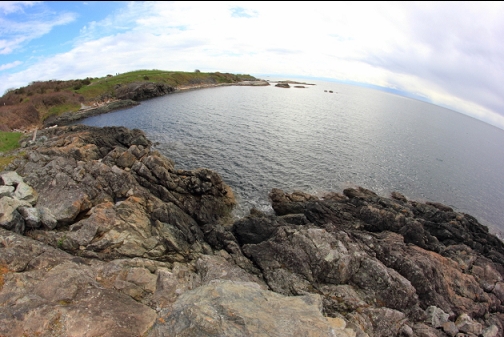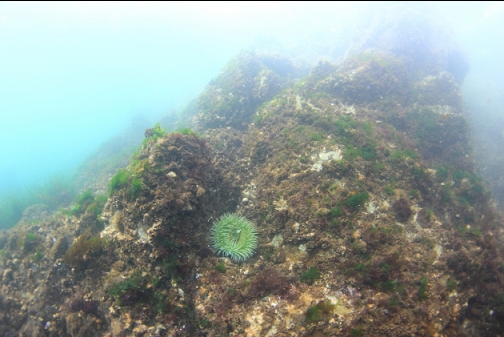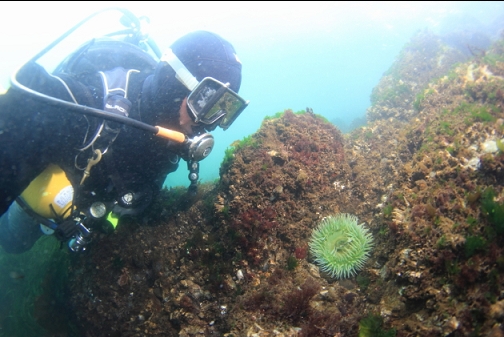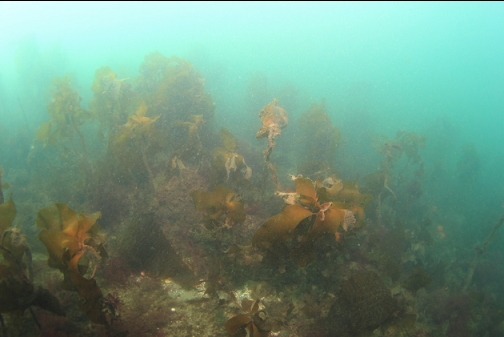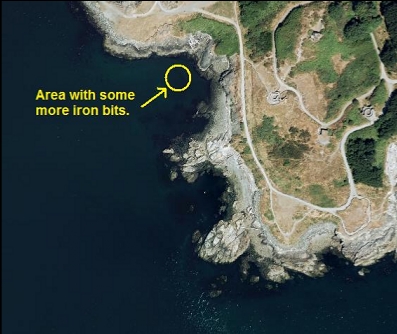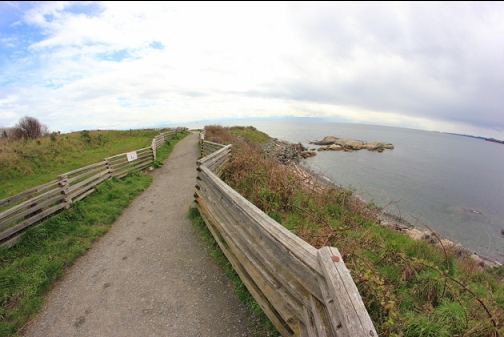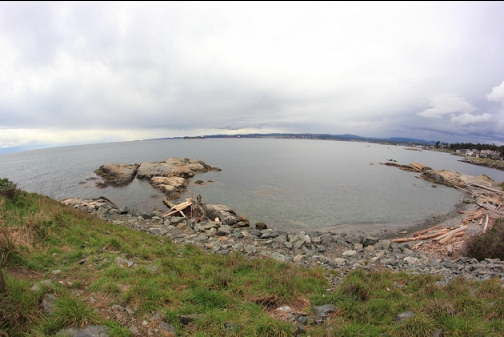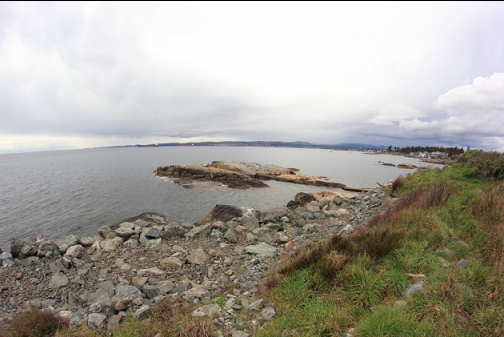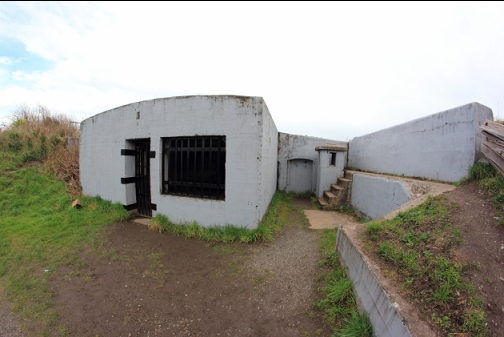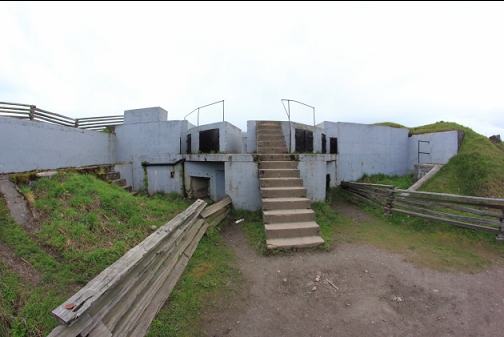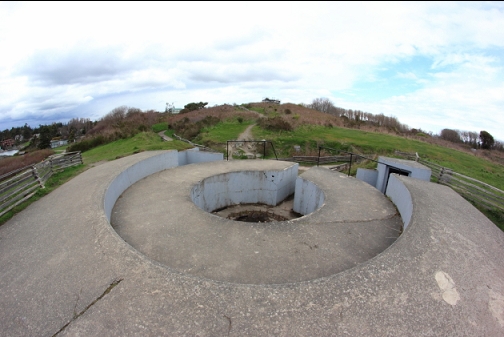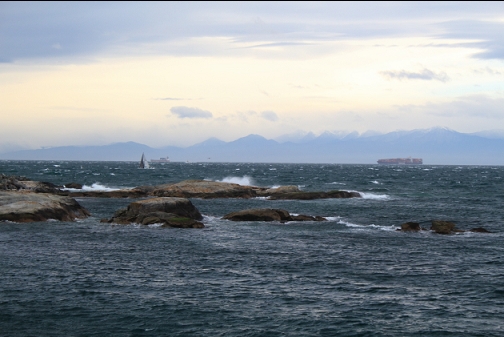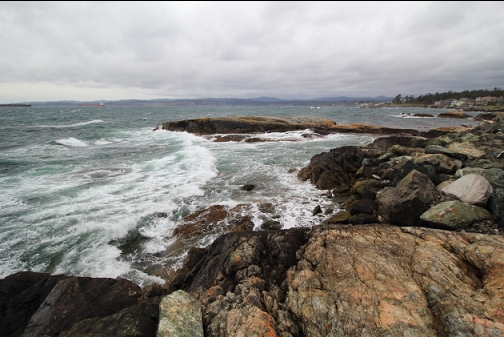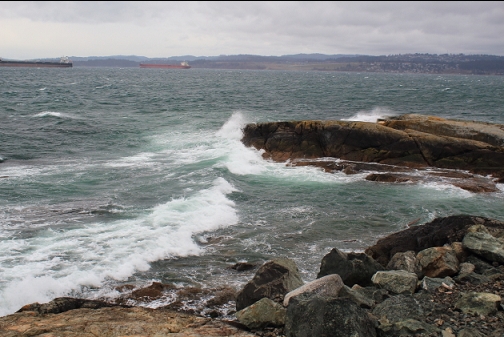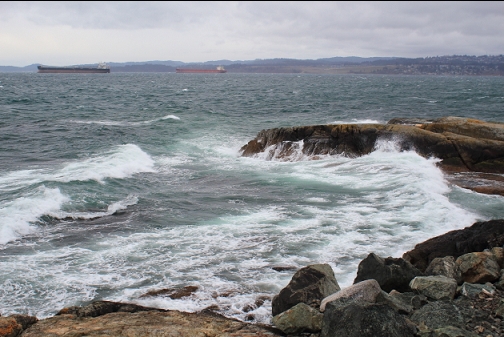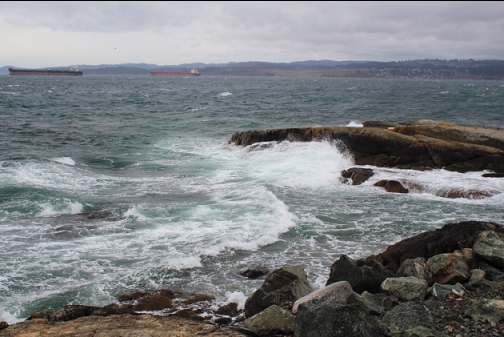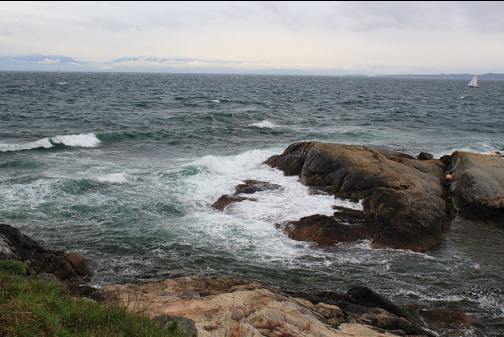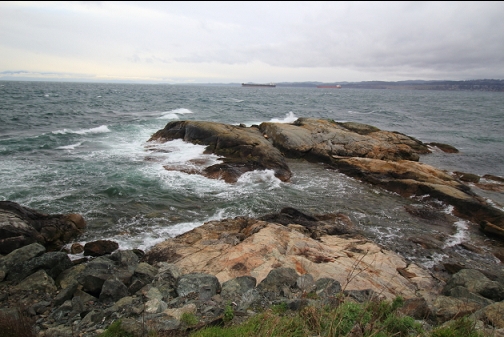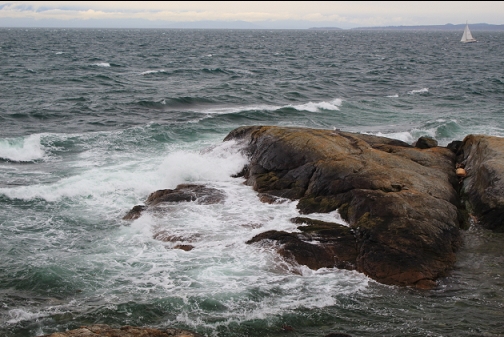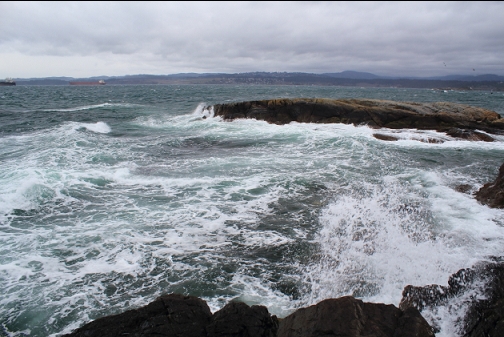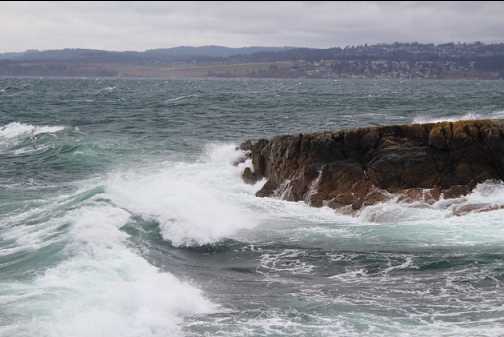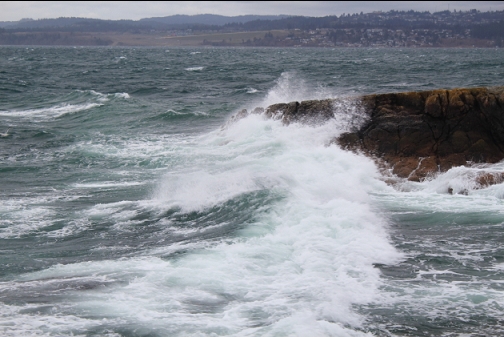It has been 10 years since I last dove in the area around the tip of Macaulay Point. The hike to the water from the parking lot discouraged me from diving here again. I had recently been reading some old British Colonist newspaper articles in their online archives about the wreck of the Nidge. It was a 75'-long wooden steam tug built in 1906. On Dec. 15, 1912 it lost steam pressure and blew ashore at Macaulay Point. I decided to do a dive here and have a look for anything that might be left. According to the news reports the wreck was in a very shallow area, South-West of Macaulay Fort (the "fort" was in the same location as today's WW2 concrete gun mounts). The tug was broken up and destroyed by the waves over the next few days. I found advertisements from the insurer offering the machinery for sale, but I couldn't find a record of anyone buying it or salvaging it. I thought it unlikely that the machinery (engine, boiler, propeller, etc.) would just be left in place in a shallow area near shore and close to town, but even if someone salvaged it (likely for scrap), there might still be some remains left at the site.
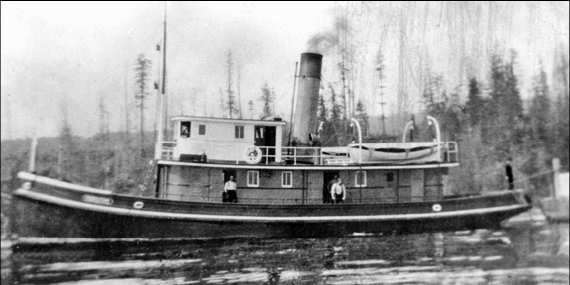

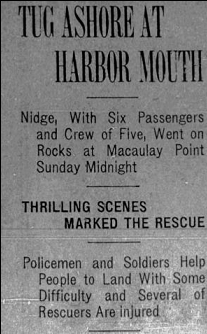


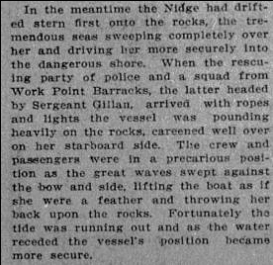
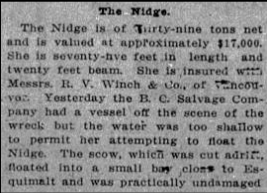


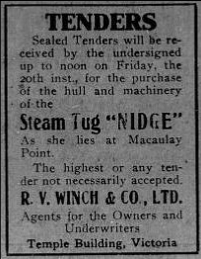

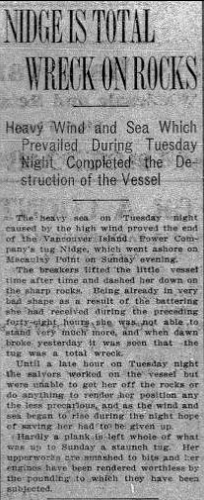
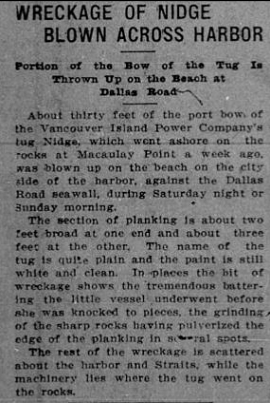



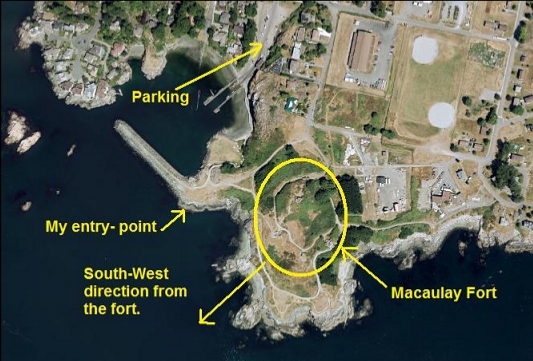
I came here for a dive on March 24, 2017. I was hoping it was still early enough in the year before the kelp grew up and covered everything.
The giant green anemone (the only one I know of in the Victoria area) was still right under my entry-point. The visibility was pretty bad. It was windy the night before and the visibility was a stirred-up 8-10'. I also saw that I was diving too late in the year. Almost the entire bottom was already covered with a variety of kelp and seaweed. My interpretation of the news report was that the wreck was in shallow water close to shore. My plan was to swim along the shoreline in the shallows and look for any wreckage. I looked at the area between the intertidal zone and about 15' deep.
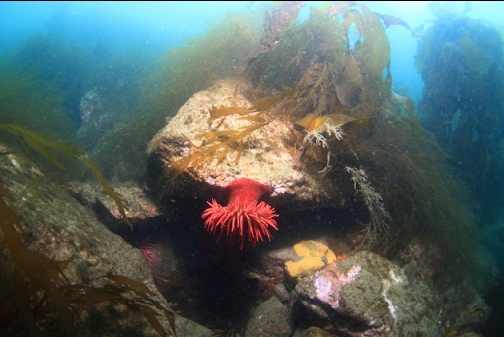
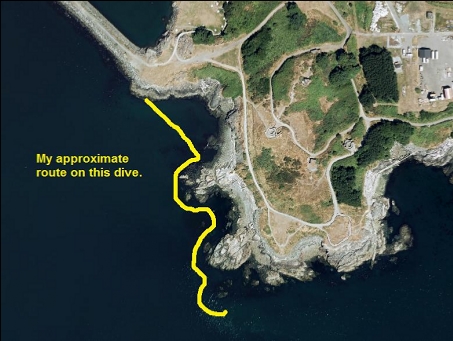
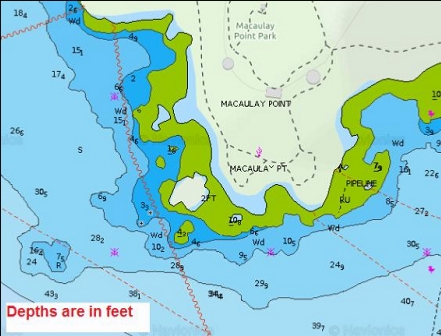
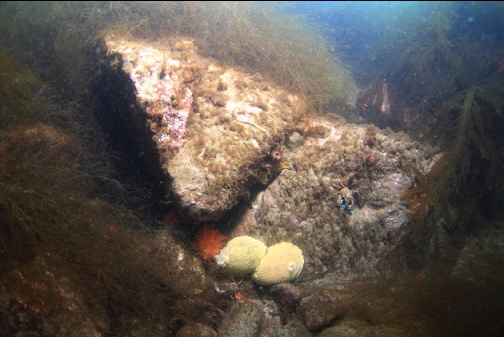
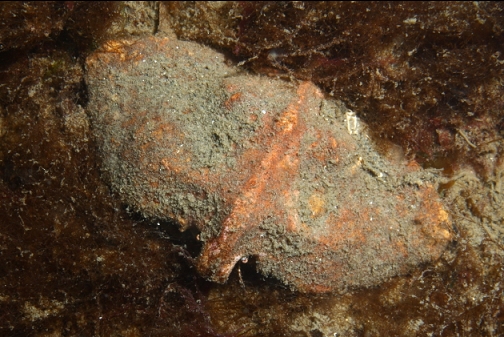
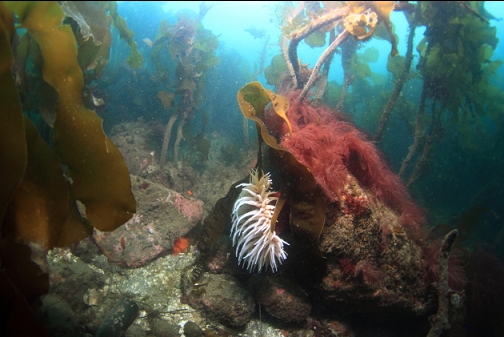
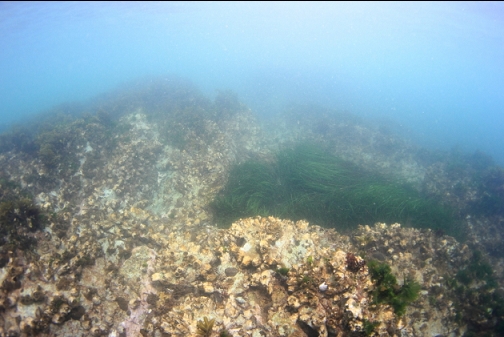
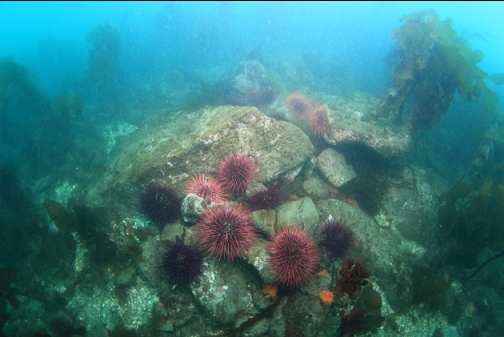
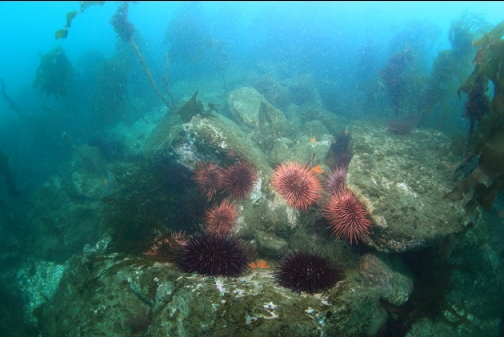
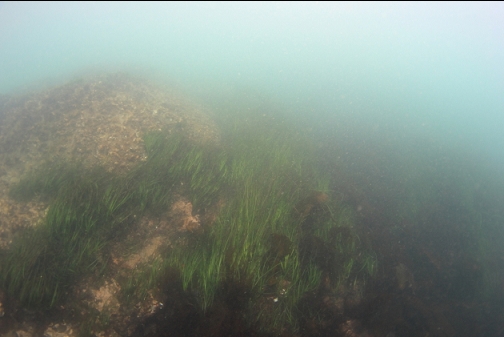
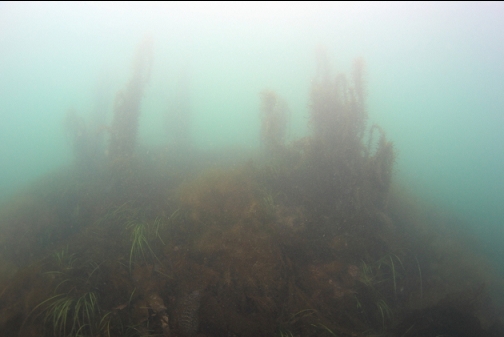
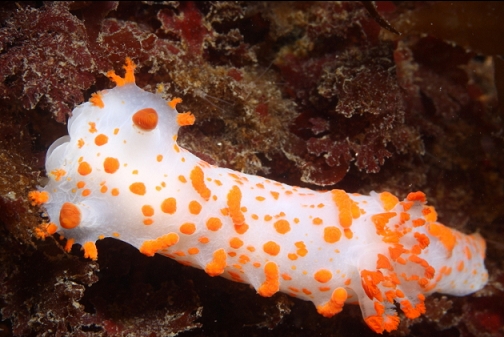
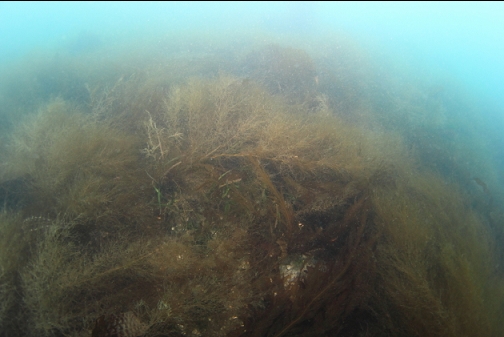
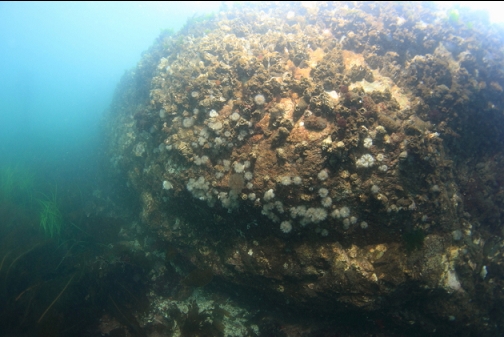
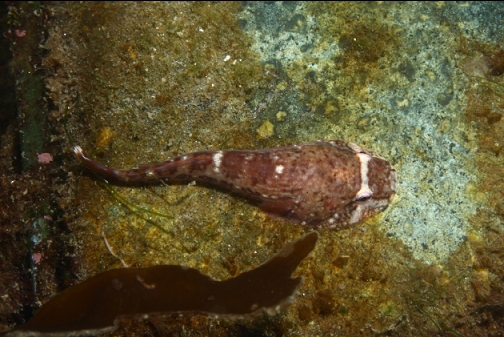
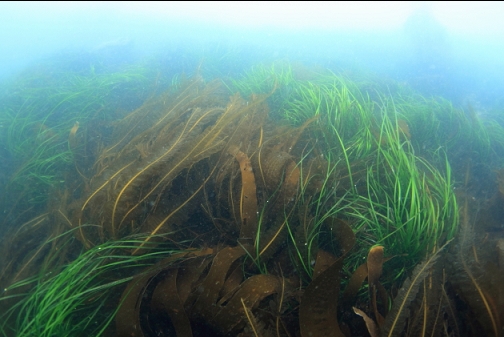
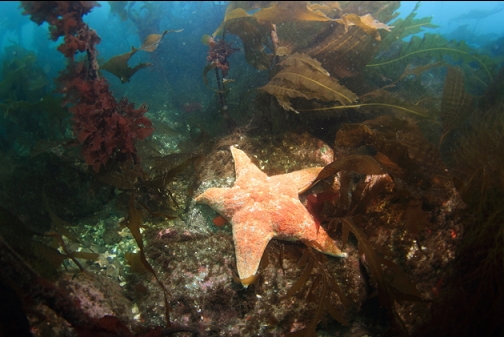

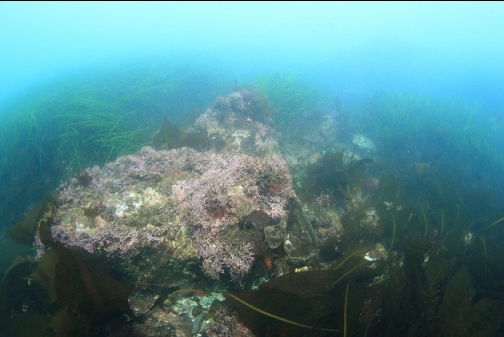
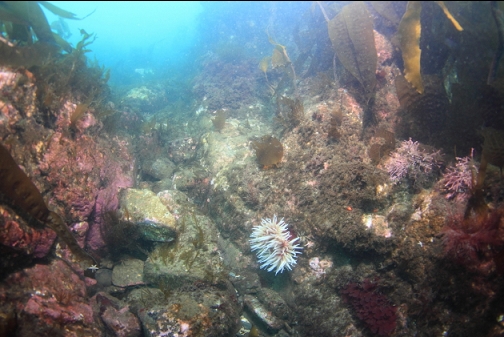
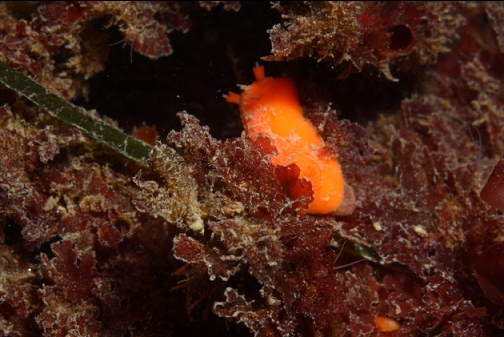
So far I hadn't seen any wreckage. Even if there was anything to see, the covering of kelp over the bottom would have hidden it. When I reached the area at the tip of one of the rocky fingers sticking out from the point I saw a couple of large-ish iron objects. This rocky finger was the main area I wanted to investigate for wreckage so when I saw these objects I told myself they must be from the Nidge. There was a strange, small sandy mound covered with some kind of tube-dwelling worms. After a bit of internet research, I'm pretty sure they were ornate tube worms. At one end of this sand mound there was a flat, square iron object about 2.5' across. On the other side of the sandy mound there was an iron shaft-like object about 6' long mostly buried in the sand. There was also an iron rod (about 2' long) with a knob at one end and a small brass valve nearby. I picked up the valve for a photo, but then put it back where I found it. These were all about 8-12' deep. I had a look around the area for more wreckage, but the visibility was bad and there was so much kelp it was hard to see anything. A couple of sealions startled me by charging in when I was looking under the kelp leaves.
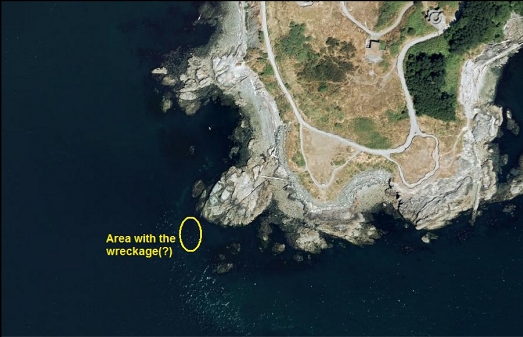
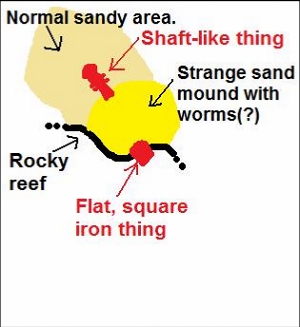

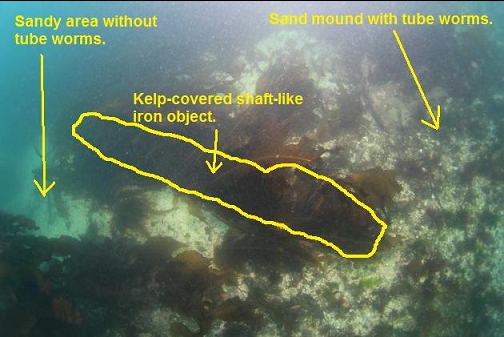
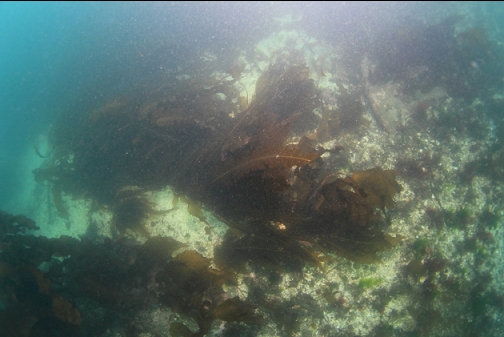
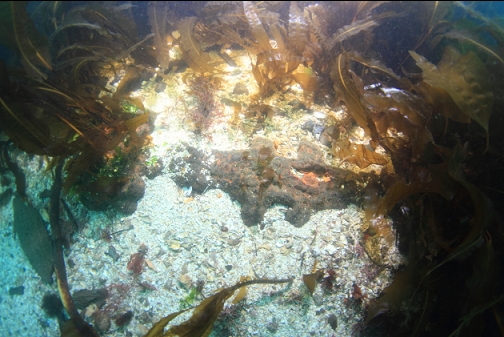
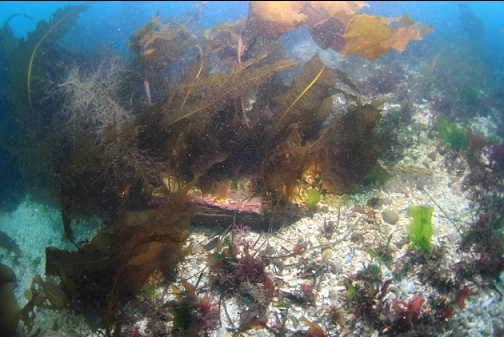
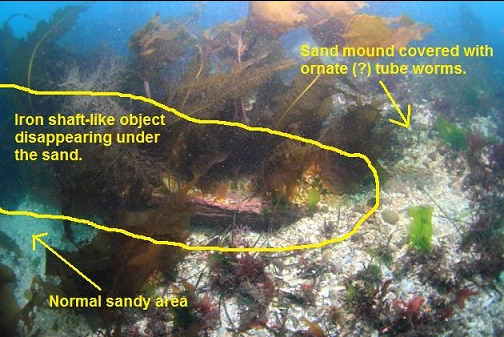
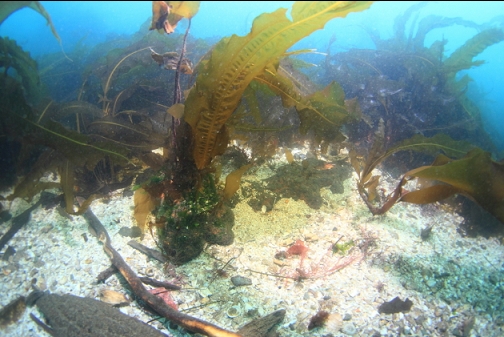
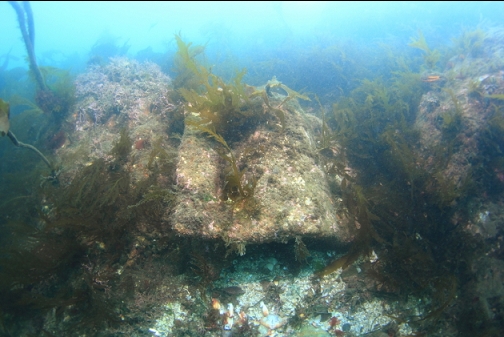
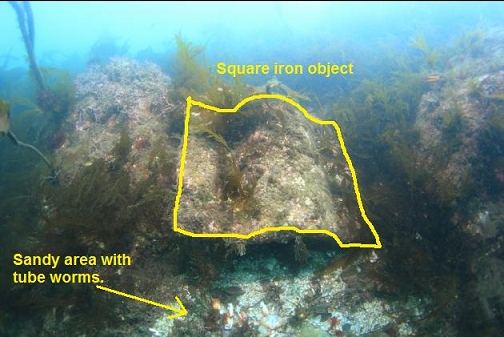
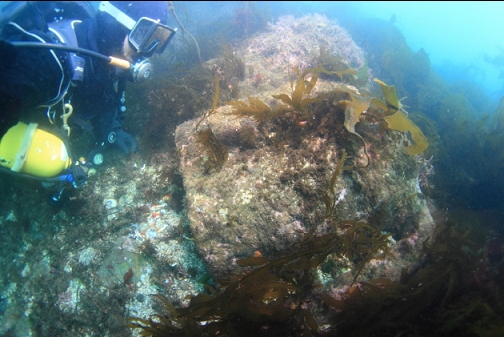
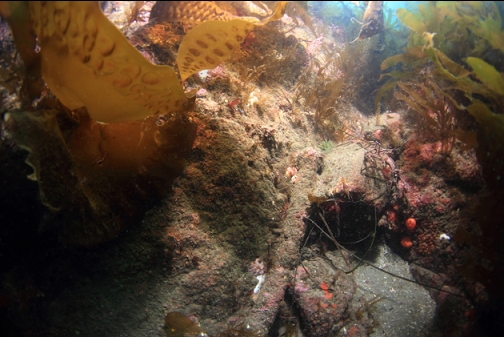
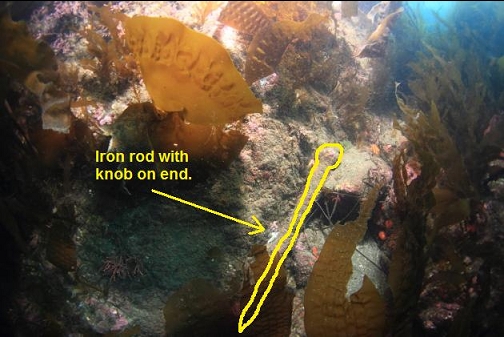
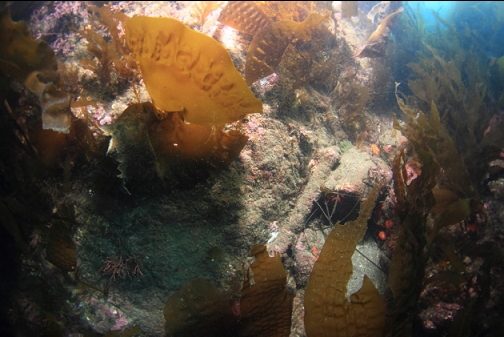
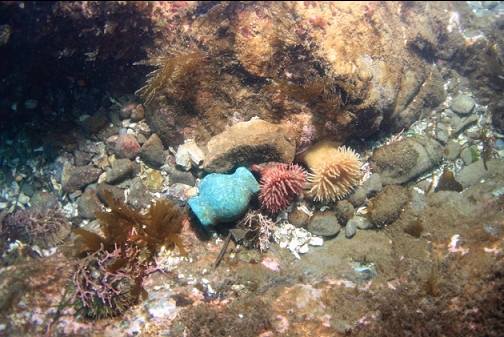
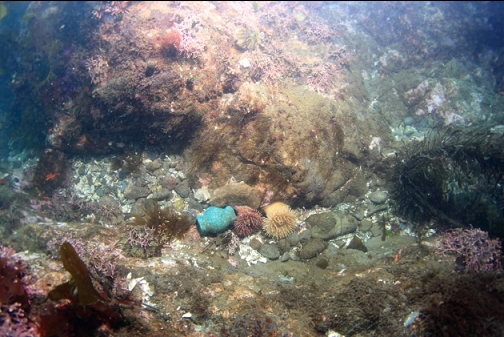
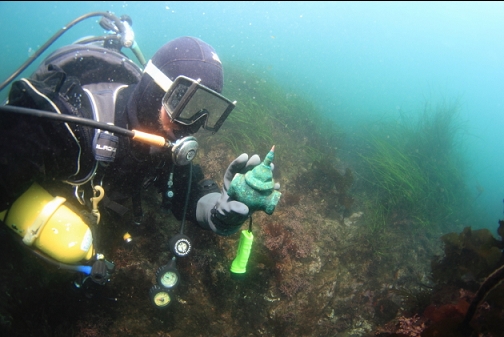
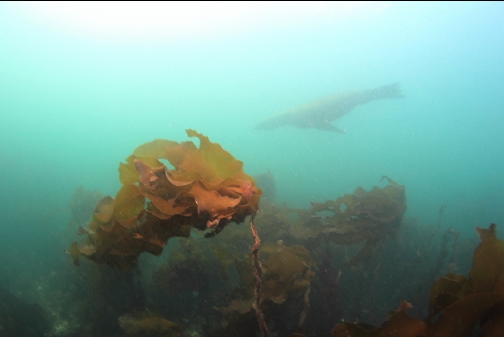
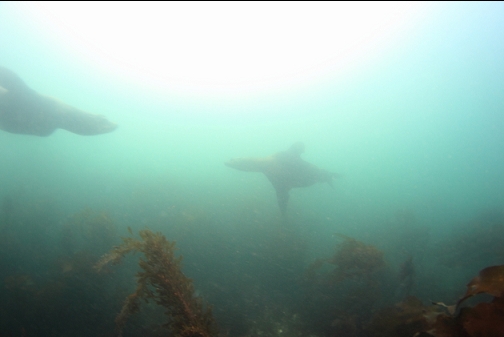
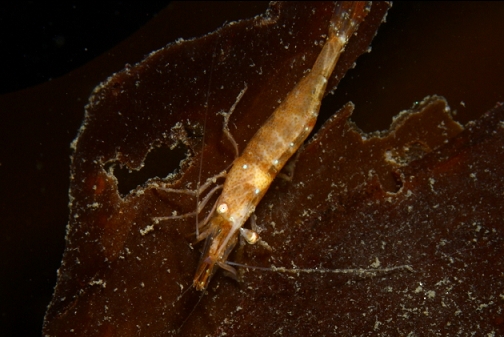
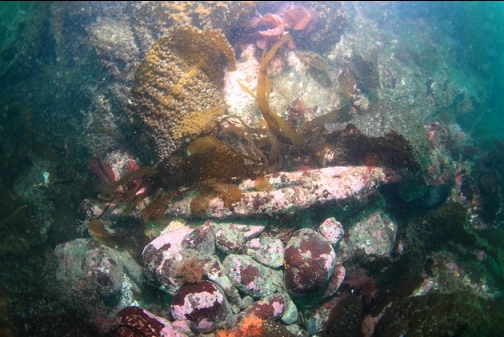
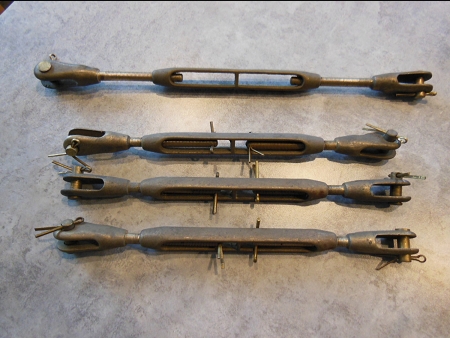
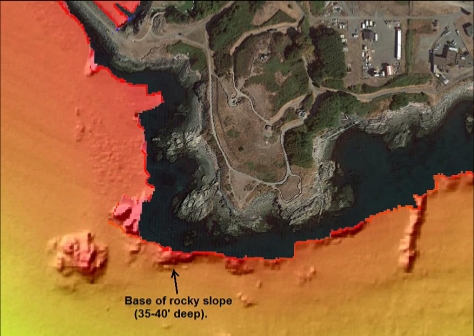
I swam out a bit farther down the rocky slope to where the chart showed the steepest, deepest part of Macaulay Point. It only went down to about 40' deep and it was siltier than I remember from years ago. About 30' deep, I saw another iron thing about 2-3' long. My first impression is that it was a turnbuckle, maybe used to secure an anchor chain to the deck, but it was so corroded, I really couldn't identify it. I assumed it was from the same source as the objects up in the shallows.
I gave up looking for wreckage. Again, the amount of kelp covering everything made it kind of pointless. I swam back towards my entry-point. A harbour seal started following me around. It even poked at my fins.
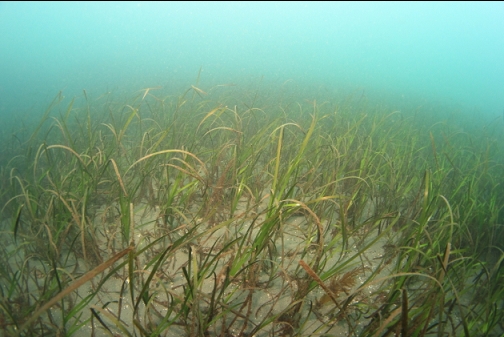
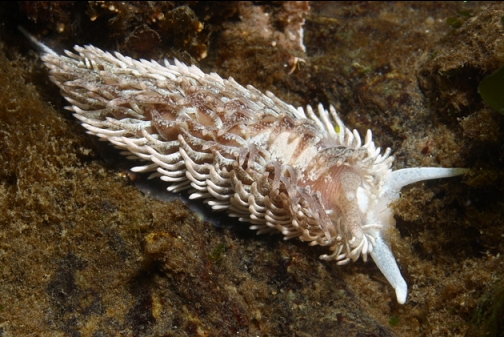

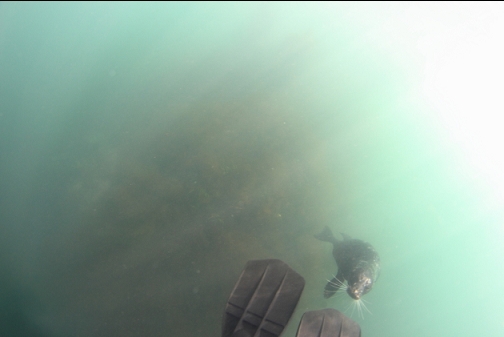
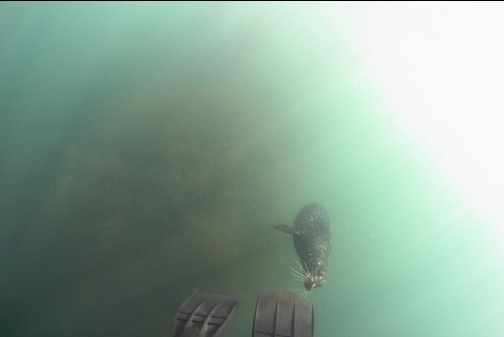
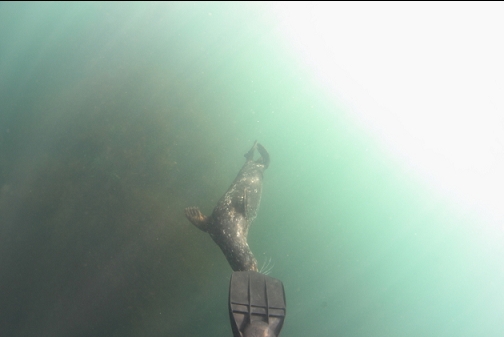
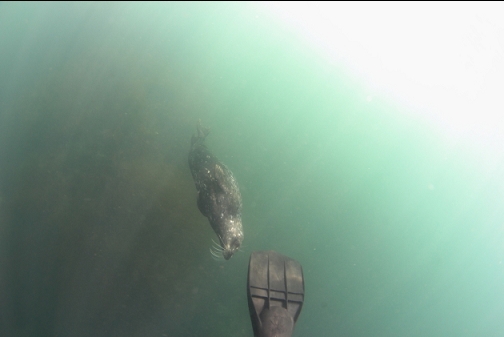
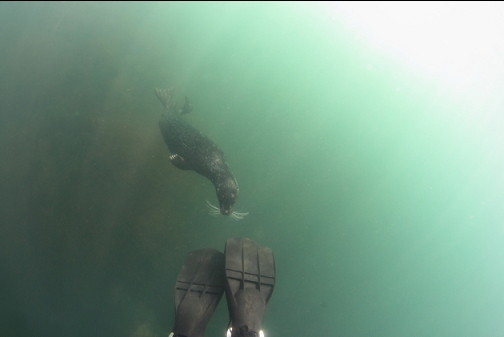
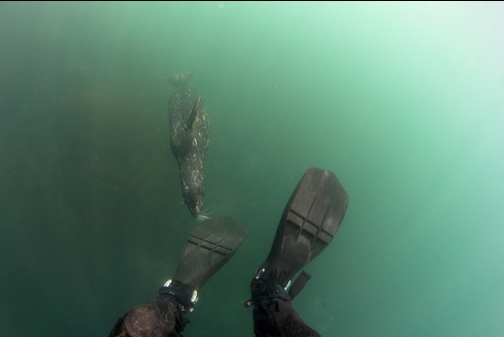
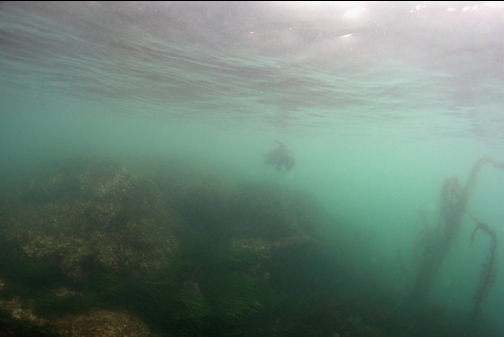
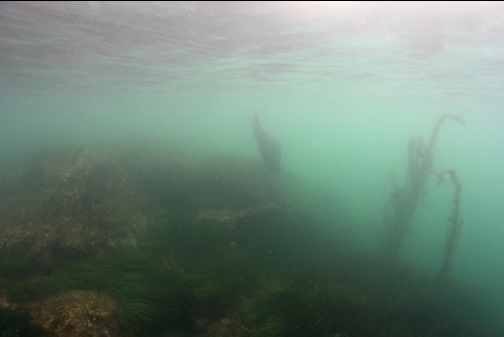
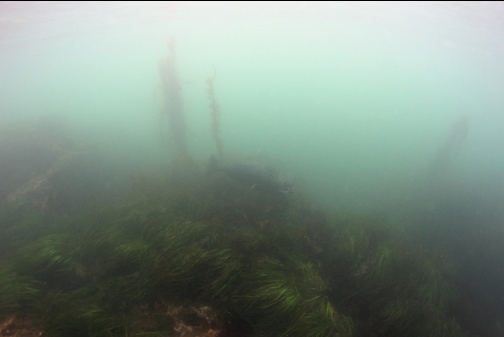
Back near my entry-point I saw a few more scraps of iron. There was another iron rod with a knob on the end and a few pieces of flat, thin iron things like sheet metal shelves or something. I didn't take any pictures since they were mostly buried under the kelp. If I remember right, this was the same area where, 10 years ago, I saw a group of small bronze valves (like the one I saw today) and a mostly-buried aluminum scuba tank. My imagination tells me that maybe some divers were diving here from shore like me and they went out and collected the valves from the area out at the point where I saw the wreckage. For some reason they then dropped them near the entry-exit point. I don't know how the buried scuba tank fits in with this story, but I think maybe I'll write a rock opera based on this theory and sell it to Hollywood or something.
I want to come back and look for more wreckage, but it will have to wait for winter when the kelp cover has died back.



















